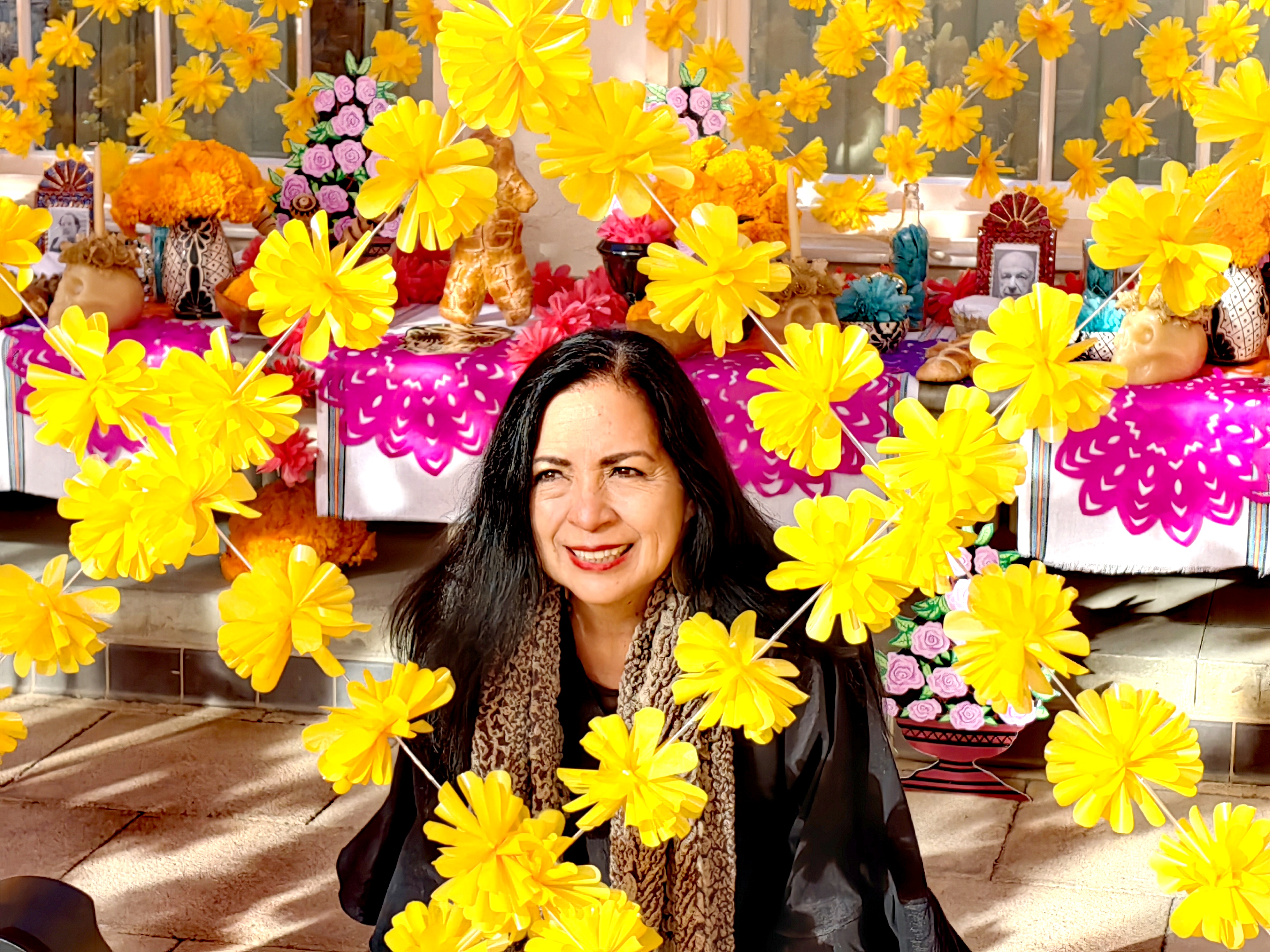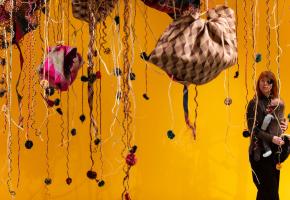All over Mexico, families gather at home or in cemeteries on 1 and 2 November to remember, celebrate, and offer food and drink to their departed relatives for the Día de los Muertos, or Day of the Dead. The tradition has its roots in indigenous beliefs that pre-date the arrival of the conquering Spanish but has since taken on elements of Catholic worship.
Anyone who has seen the Disney movie Coco, will recognize the candle-lit altares (altars) that people build in their homes and fill with colourful ofrendas (offerings) of sugar skulls, pan de muerto (bread in the shape of a body), and the vivid orange and yellow flowers of the cempasúchil, the Mexican marigold.
For conceptual artist Betsabeé Romero, who has created installations around the world that deal with issues of Mexican identity, memory and migration, this communal celebration of life that Day of the Dead represents is a tradition that taps into Mexico’s deepest past.
For her latest exhibition in the historic Temperate House at Kew, she has created two new installations: a towering chandelier of four-petalled quincunx flowers called Flor de Luz y Canto (Flower of Light and Song) made from hundreds of strands of recycled-synthetic marigold flowers, and Una Ofrenda Floreciendo en Su Memoria (An Offering Blossoming in Their Memory), a room filled with 18 Day of the Dead altars that she has dedicated to artists, actors, writers, film directors, scientists and politicians who died during the Covid pandemic.
The installation is also dedicated to all those who were unable to say goodbye to loved ones as they would have liked and the artist has left four altars at the corners of the room where visitors can leave the names of their own loved ones if they want to participate in this communal celebration of life.
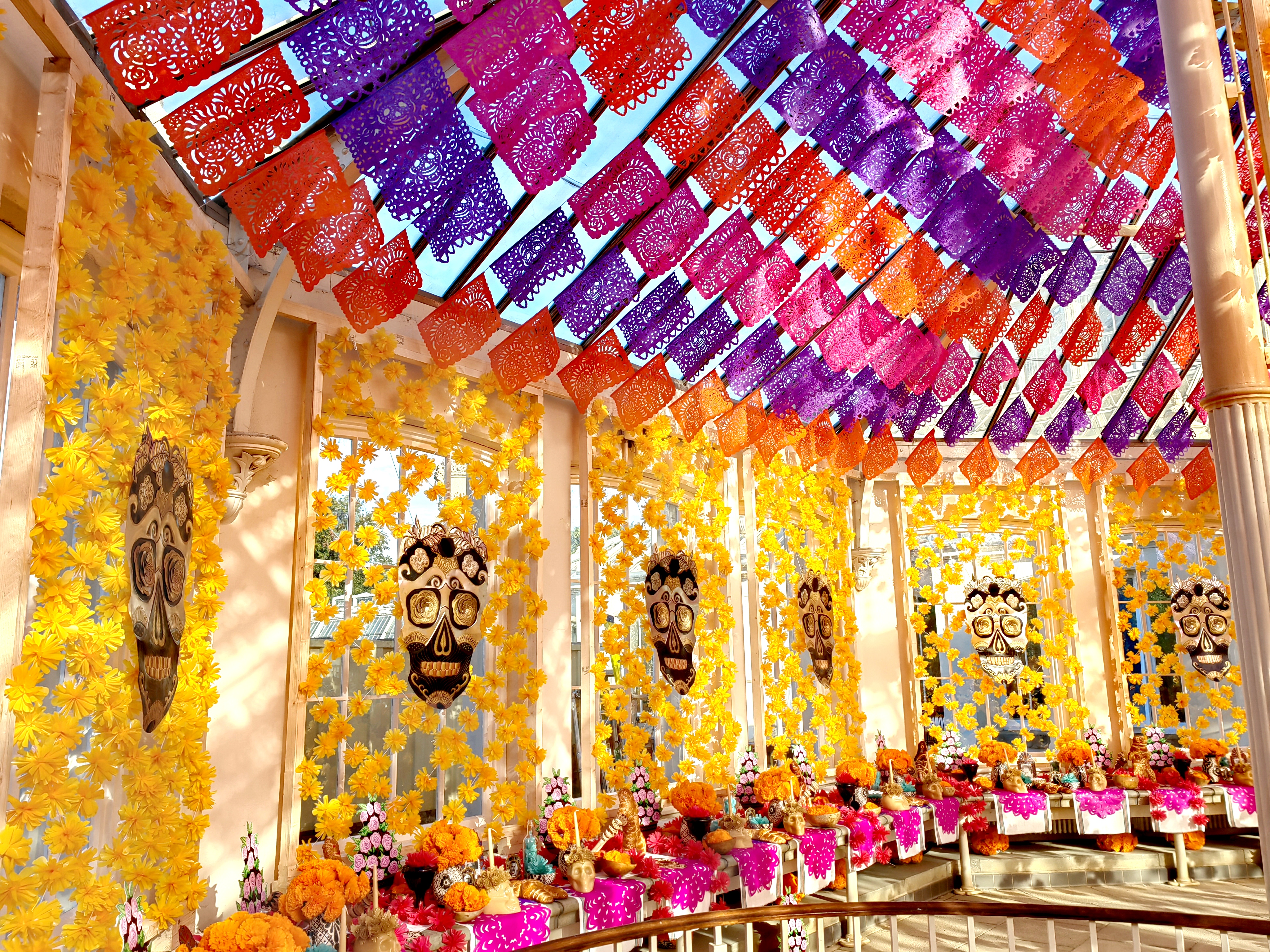
Latino Life: You have created this magnificent collection of Day of the Dead altars in your installation here at Kew. What does Day of the Dead mean for you?
Betsabeé Romero: From pre-Hispanic times and from the indigenous cultures that survived the arrival of the Spanish we have all these incredible traditions in Mexico and Day of the Dead is an important one. I studied for several years in Paris and while I was there I felt that our sense of celebration is something that is being lost in the West. What we have in Mexico is very special and I want to pay homage to that. It sounds weird to celebrate death but we are not, we are celebrating life and that is why the altars are so colourful and have so much energy and light.
LL: Many people will know about the Day of the Dead from the Disney Pixar film Coco, especially the bright orange petals of the cempasúchil, the Mexican marigold that forms a bridge for the spirits to return to the land of the living.
BR: Day of the Dead is rooted in pre-Hispanic rituals tied to the Aztec goddess Mictecacihuatl (the Goddess of the Dead). She is the one who lets the spirits of the dead travel back to Earth to visit their families and it is the fragrance of the cempasúchil flowers on the altar that helps to guide them. The film makers did an amazing 10 years of research for the film Coco, especially in Michoacán and Oaxaca, which have the most well-known altars, but in my work I want to show the diversity of the Dia de Muertos traditions in Mexico and that’s why here in Kew I have recreated the kinds of altars you see in the Maya areas of Yucatán and Quintana Roo, because they are so special.
LL: What makes the Maya altars so special?
BR: In the Yucatán Peninsula the Day of the Dead is called Hanal Pixan, which in Mayan means “Food for the Souls”. One special thing they do is they build a family altar for their ancestors but they also make a small altar for somebody who passed away alone and has no family to celebrate their life. We have just been through the Covid pandemic and sadly many, many people passed away in hospitals alone and for that reason I dedicate this installation collectively to those people.
LL: So visitors can leave the names of their own loved ones on the altars?
BR: Yes. That’s why I made these four altars in the corners dedicated to those who died in the pandemic.
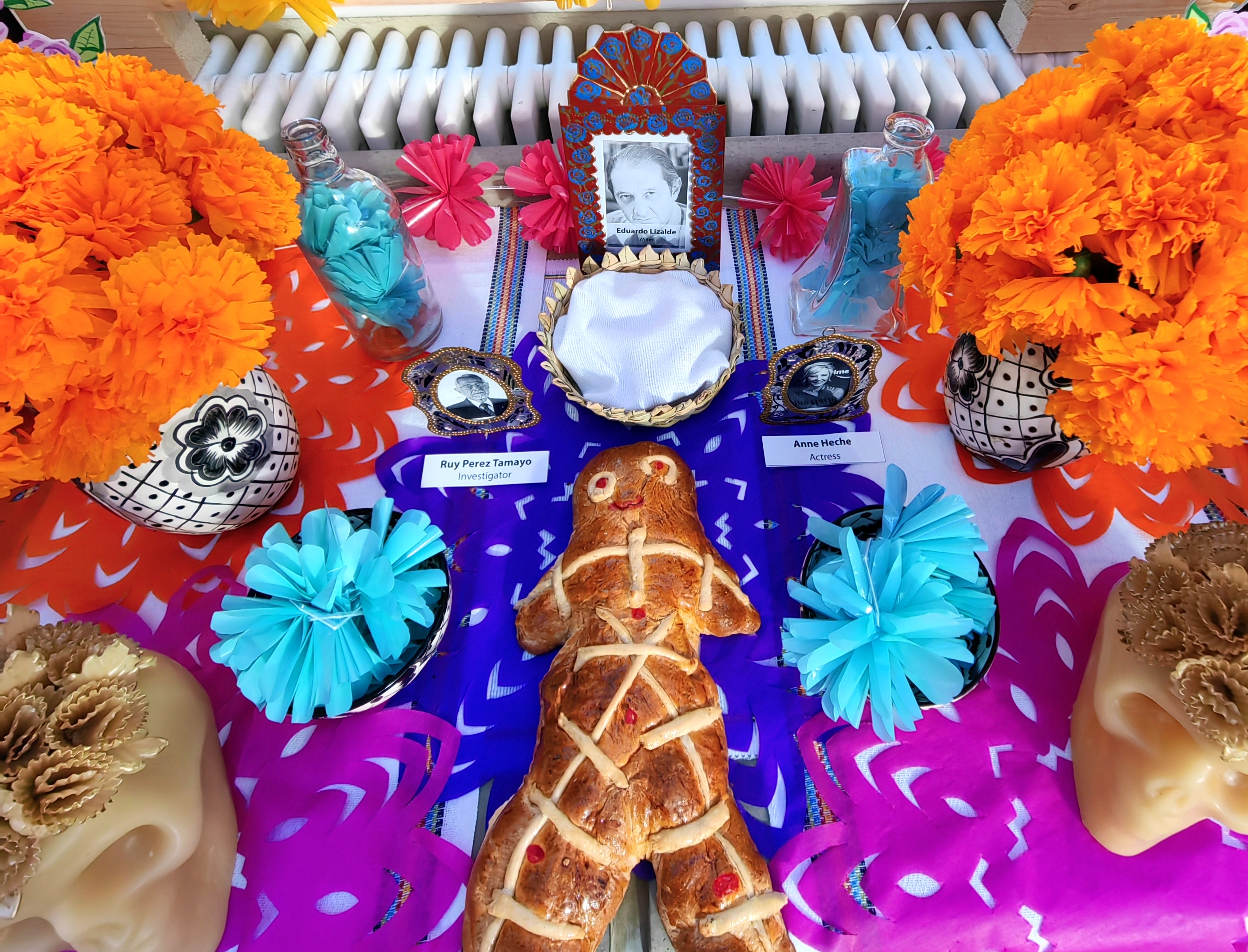
LL: You have some incredible names on the altars, I saw photos of the actress Olivia Newton John, actor Ray Liotta, painter Paula Rego, Mexican poet Eduardo Lizalde, Spanish novelist Javier Marias. How did you choose who to include and is there one that touches you personally?
BR: I did a lot of research and it was incredible how many famous people had passed away in this period, I mean, so much was happening that there was not even time to reflect on it. So I wanted to explore that, and also I wanted to highlight this Day of the Dead tradition in my country that is spontaneous, communal, and collective that helps us to get through these difficult moments. Here in England recently the collective grieving for the Queen as she lay in state was an example of how we instinctively want to be with others to share these moments when somebody close to us passes. It’s a primal human instinct. On a more personal level, when somebody dies in Mexico we gather together, we eat the food that they liked, drink the drinks that they liked, play the music they liked. We keep them alive in our memories, and every year we have this day when we can stop and do that. In a celebratory way. That’s how I know my great grandparents, because of the stories my grandparents told me when we remembered them on the Day of the Dead.
LL: What drew you to Kew Gardens as a venue for your art?
BR: I love Botanical gardens. I always have. They are like an oasis in the city. So it was a dream for me to do something here in Kew and an honour that they recognized that my art is recycled and my work reflects the ancient symbolism of flowers in pre-Hispanic Mexico and the importance of flowers in our daily lives. Mexico is the third largest producer of flowers in the world, and 90 per cent of those flowers are bought and sold in Mexico by Mexicans. We live our lives surrounded by flowers and they are an important element in our rituals. Celebrations of any kind always include flowers, from the day we are born until the day that we die, and afterwards too.
LL: Can art and culture help us overcome the challenges of deforestation, climate change and how we treat the planet?
BR: For sure. I think we have to go back to the values and harmonious way of living with nature of the indigenous cultures of the world. They only make up 5 percent of the whole population of the world but they help to preserve 70 percent of the biosphere. We have a special opportunity to learn from the indigenous cultures in Mexico because they make up 15 percent of the population and they have a very deep and respectful connection to nature and we can learn from them. We have to get back to local things, to preserve the diversity of our landscapes, our languages, our communities, the local ingredients in our food, and if we do that we may become more attached to our present and our past, while celebrating our differences. We need to resist the homogenization of our cultures.
LL: I know that Kew have been working in Veracruz with reforestation programmes and collecting samples of endangered plants to preserve them in their seed bank. Is that tied in to your work?
BR: Kew has been working with Mexico for many years. There is some very important work being done in the cloudforests of Veracruz between Kew, the Universidad Nacional Autónoma de Mexico (UNAM) and a local NGO Pronatura Veracruz. When you first enter the Temperate House from the main entrance you can hear a soundscape made by the 3D sound artist Augustine Leudar, which blends field recordings made in the cloudforest in Veracruz with abstracted elements of folk music, and even sounds the human ear can’t detect that he has made audible by changing the frequency. It is very special.
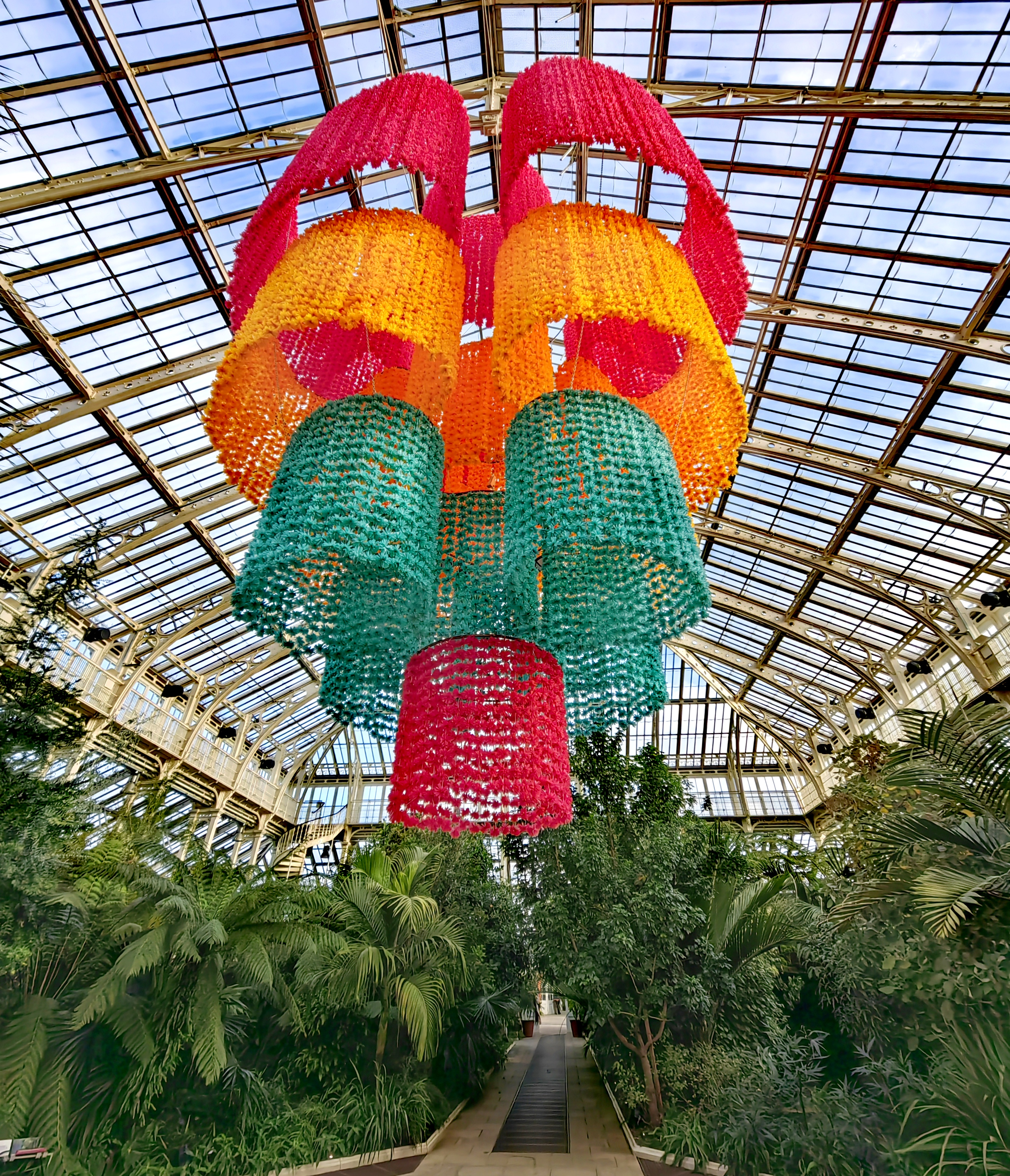
LL: It is worth noting that there are several interventions by different artists in the Temperate House.
BR: Exactly. The gardener Jon Wheatley designed a space inspired by Mexico’s national flower, the dahlia, and Las Pozas, a surrealist garden created by the British poet and artist Edward James in the Sierra Gorda mountains of Mexico, near the village of Xilitla, San Luis Potosí. Also, Fernando Laposse, a designer from Mexico who works with natural plant fibres and promotes sustainability, has created some fantastic sloths that you can find in the trees.
LL: Mexico’s cultural diversity is as rich and varied as its biodiversity, with some 62 ethnic groups speaking 290 languages. How do you reflect so much mega-diversity in your installations?
BR: I think is very important to help preserve the small family workshops that produce the articles that appear on our Day of the Dead altars. This is very important because they do not make these handicrafts for tourists but for Mexicans and to preseve our traditions. I work with a woman called Consuelo Rivera and her family who have been hand-making, and recycling, the plastic flowers in my installations for six years. Consuelo lives in one of the poorer neighborhoods on the outskirts of Mexico City and most of her neighbours work in factories or in the service industry but Consuelo continues in this long tradition of flower making that she inherited from her grandmothers. The wax skulls on the altars are made by another family in Mexico City, a couple, who have a family tradition from Guanajuato and use wax moulds that date back to the 19th century. It is so special to keep these traditions alive.
LL: When you look closer there are so many elements to the altars. Is this the diversity you are trying to represent?
BR: Oh, yes. The bread. The animas, the sweet bread made in the shape of a human body is similar to pan de muerto and is made in a very old bakery in Mexico City close to Coyoacán, where Frida Kahlo had her Casa Azul, and Anahuacalli where Diego Rivera kept his archaeological collection. I love these animas. I have been working with this bakery for 20 years. Also, I use cuencos, or jicaras, from Yucatán which are natural gourd bowls used on Maya altars, usually four for the four cardinal directions, where you put food offerings for the spirits of the departed.
LL: And you have wooden molinillos for whisking up hot chocolate?
BR: If you are in a small village in Mexico, especially in the Yucatán on the Day of the Dead and you see petals on the floor and you follow them you will definitely find a family who are giving hot chocolate to those who come to join them to celebrate a relative’s passing. Mexican people are so generous, but in Yucatán, whatever they have they will share, either a simple hot chocolate or a more complicated dish like a mole or a pib, which is a traditional Yucatecan dish stuffed with chicken, turkey, pork or beef.
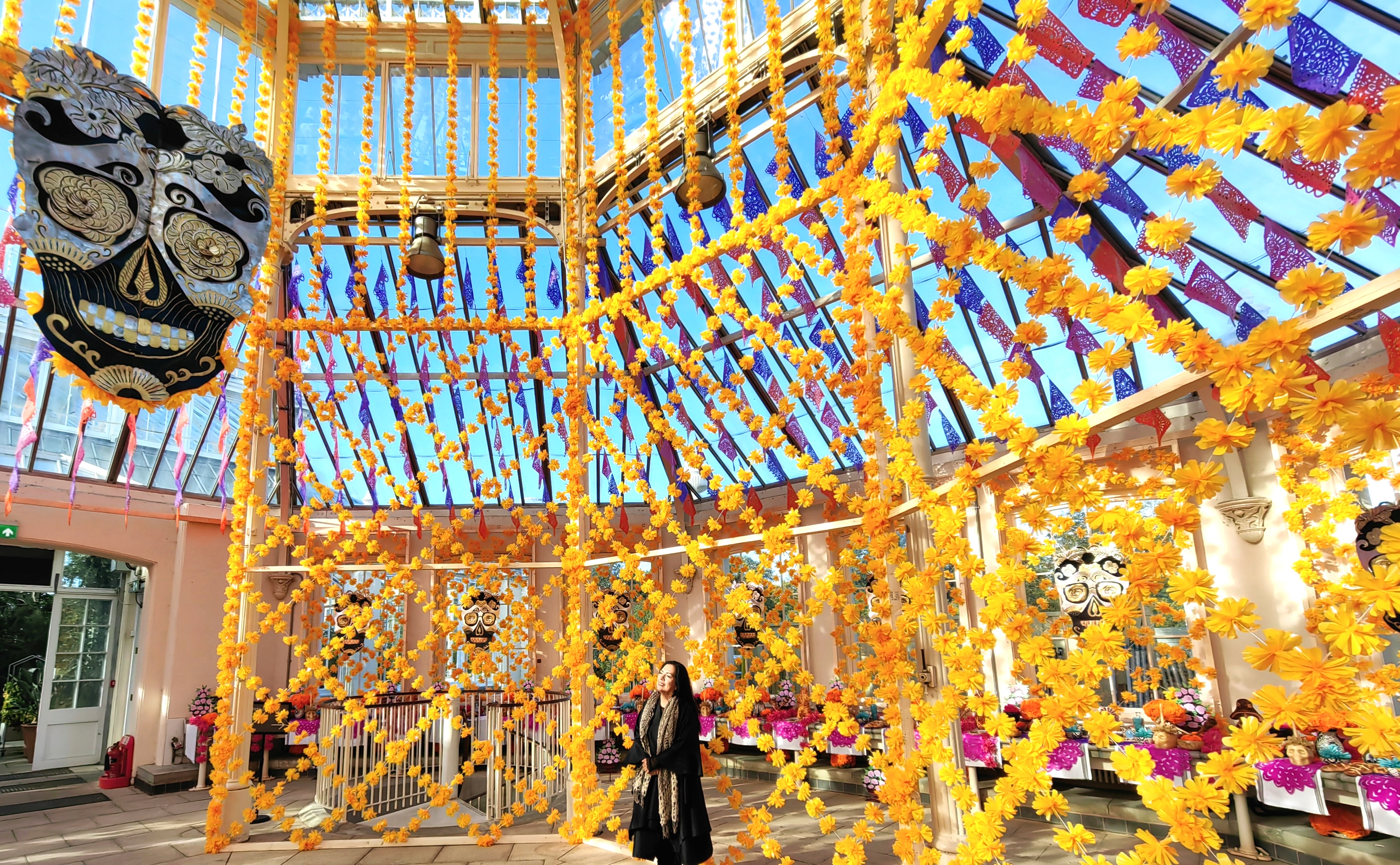
LL: What is the most personal photograph you have included in your altar installation?
BR: If you look though the altars you will find a photograph of the great Argentine painter Antonio Segui who was my teacher in Paris. He passed away a few months ago and I wanted to honour his name because he was a very important Latin American artist and was like a father to me when I was at art school in Paris when I was young. A great man and a great artist. Truly.
The Mexico Festival at the Temperate House in the Royal Botanic Gardens in Kew runs from Saturday 1 October to Monday 31 October. Entry to the exhibitions is included in the admission price to the gardens. There will also be free weekend concerts in the Temperate House by Mariachi Las Adelitas, and during the 22-31 October half-term a series of family activities and workshops that focus on popular Mexican traditions.
After Hours events on the evenings of 7,8,14, and 15 October include live music and costumed Day of the Dead shows by Mandinga Arts and the Crick Crack Club. There will also be Mexican cocktails, and cooking demonstrations by the chefs at Santo Remedio restaurant and cafe, which serves up authentic food inspired by the cantinas and mezcalerías of Mexico City.
For more details visit Kew Gardens’ website: https://www.kew.org/kew-gardens/whats-on/mexico
Russell Maddicks is the author of Culture Smart! guides to Cuba, Ecuador, and Nicaragua and is currently working on the second edition of Culture Smart! Mexico. Follow him on Twitter and Instagram @LatAmTravelist.


